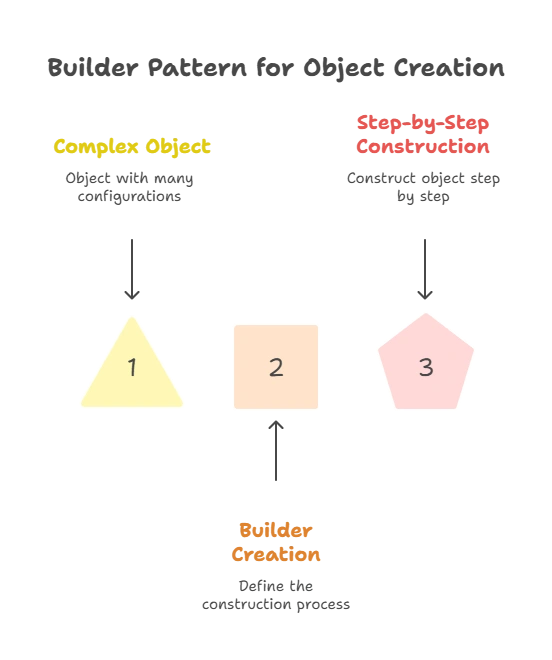Builder Pattern
Builder patterns offer a structured approach to construct complex objects step by step, separating the construction process from the object representation. In Python, Builder patterns facilitate the creation of objects with varying configurations, promoting code flexibility and maintainability.
Introduction to Builder Pattern
Understanding Builder Pattern
The Builder pattern is a creational design pattern that separates the construction of complex objects from their representation. It allows the construction process to be abstracted, providing a clear and concise way to create objects with varying configurations.
Importance of Builder Pattern
Builder patterns offer several advantages:
- Flexible Object Creation: They enable the creation of objects with complex configurations in a flexible and intuitive manner.
- Separation of Concerns: They separate the construction logic from the representation of the object, promoting code maintainability and readability.
- Step-by-Step Construction: They allow objects to be constructed step by step, facilitating the creation of objects with different configurations.

Basic Builder Implementation
Simple Builder Example
A basic implementation of the Builder pattern involves defining a builder class with methods for setting various attributes of an object and a director class to coordinate the object construction process.
class Car:
def __init__(self):
self.make = None
self.model = None
self.year = None
def __str__(self):
return f"Car: {self.make} {self.model} ({self.year})"
class CarBuilder:
def __init__(self):
self.car = Car()
def set_make(self, make):
self.car.make = make
return self
def set_model(self, model):
self.car.model = model
return self
def set_year(self, year):
self.car.year = year
return self
def build(self):
return self.car
# Usage
builder = CarBuilder()
car = builder.set_make("Toyota").set_model("Camry").set_year(2022).build()
print(car) # Output: Car: Toyota Camry (2022)
Explanation:
- The
Carclass represents the object to be constructed, with attributes for make, model, and year. - The
CarBuilderclass provides methods for setting the attributes of theCarobject and abuild()method to return the constructed object. - Clients can use the builder to construct
Carobjects step by step, setting the desired attributes before finally building the object.
Advanced Builder Implementations
Fluent Interface Builder
A fluent interface builder improves the readability and expressiveness of the builder pattern by allowing method chaining.
class CarBuilder:
def __init__(self):
self.car = Car()
def set_make(self, make):
self.car.make = make
return self
def set_model(self, model):
self.car.model = model
return self
def set_year(self, year):
self.car.year = year
return self
def build(self):
return self.car
# Usage
car = CarBuilder().set_make("Honda").set_model("Accord").set_year(2023).build()
print(car) # Output: Car: Honda Accord (2023)
Explanation:
- The
CarBuilderclass is a builder implementation for constructingCarobjects. - Each setter method (
set_make,set_model,set_year) sets the corresponding attribute of theCarobject and returns the builder instance itself. - This implementation allows method chaining, enabling the client to call multiple setter methods in a single statement.
- The
build()method returns the fully constructedCarobject.
Director Class
A director class can be used to coordinate the object construction process, delegating the construction steps to the builder.
class CarDirector:
def __init__(self, builder):
self.builder = builder
def construct_suv(self):
self.builder.set_make("Jeep").set_model("Wrangler").set_year(2024)
# Usage
builder = CarBuilder()
director = CarDirector(builder)
director.construct_suv()
car = builder.build()
print(car) # Output: Car: Jeep Wrangler (2024)
Explanation:
- The
CarDirectorclass acts as a director in the Builder pattern, coordinating the construction process. - It takes a
builderobject as a parameter during initialization. - The
construct_suv()method delegates the construction steps to the builder by setting the make, model, and year of the car to create an SUV.
In the above topic, we've explored the Builder pattern in Python, from basic implementations to advanced techniques. Builder patterns provide a flexible and intuitive way to construct complex objects with varying configurations, promoting code readability, maintainability, and scalability. By mastering Builder patterns, Python developers can streamline the object construction process, create reusable and modular code, and build more robust and flexible software solutions. Happy coding! ❤️
